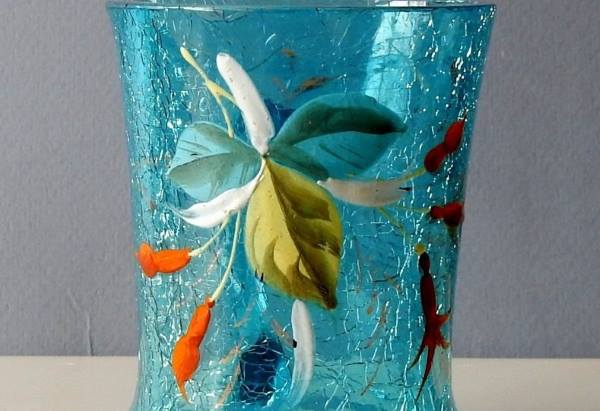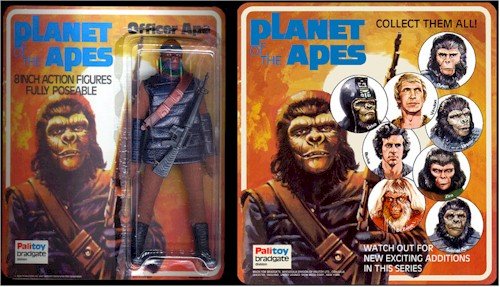Up until the early 1970s, celluloids (the transparent sheets of plastic now more commonly referred to as acetate) were either destroyed, reused by the animation studios for later cartoons, or simply thrown away. To the studios, storing celluloids already used in the animation process was expensive and a waste of space. The fact that these celluloids contained beautifully painted cartoon characters that were at once historically important and valuable pieces of art in their own right, was inconsequential.
About twenty-five years ago, a small group of enterprising enthusiasts living in California embarked on a unique project to collect and preserve these wonderful moments from cartoon history. These few loyal fans and animators sometimes removed cels from waste-bins left outside studio premises. For example, Hanna-Barbera cels from such classic cartoon animations as The Flintstones, Top Cat and Yogi Bear would regularly appear at the Burbank backlot, as would the collectors, obtaining cel after cel depicting some of the best scenes from TV cartoons.
In those early days no one imagined that ultimately animation art would attract the kind of demand it enjoys currently. With the emergence of galleries and art dealerships focussing on animation art, it was inevitable that major auction houses like Sotheby’s and Christie’s would come to hold regular animation art auctions in London and New York. This has brought to life a number of famous cartoon scenes previously believed to have been lost forever.
In the mid-seventies, Linda Jones, the daughter of the legendary Warners director, Charles ‘Chuck’ Jones, obtained a license from Warners to publish limited edition cels designed by her father, resulting in a greater awareness of the art form and ultimately increasing the value of original production pieces.
Original production cels from Warner Brothers cartoons were scarce – Warners required storage space for their publicity department, so thirty years of animation history was literally incinerated. This paved the way for the production of the signed limited edition cels, which were marketed successfully and sold through galleries.
With the interest in animation art growing, it was not long before all the major studios entered the market, producing their own limited edition cells from their now famous cartoon shows. Today, the limited editions market is big business, with some of the galleries in the United States and Australia dealing exclusively in limited edition art.
The amount of cels that surface from a certain scene in a film is quite small, often being less than a dozen variations, whereas limited editions are generally produced in multiples of no less than 200. A quality image or a memorable moment will always have a place in a collection, and once all the available images disappear, they will usually increase in value due to the small supply versus a large demand.
A common grievance of collectors is the over abundance of the limited edition cels that are being produced by studios. There are, for example, at least seven scene variations of Warners’ cartoon, Duck Dodgers in the 24th Century, available for purchase as a limited edition, with the originals being scarce or non-existent. Although limited editions and sericels – which are serigraphed and are usually of larger edition sizes than hand-painted limited editions – serve a purpose, serious collectors do not consider these cels to be as valuable as original production pieces. What was an initial edition of 200 may eventually expand to 2000 when one takes into account future limited edition releases with variations on the original scene and countless sericel productions.
Like anything collectable, the original will always fetch a higher price and will weather fluctuations in the collectable market. The Weeping Woman by Picasso may demand prices upwards of $50 million; however, I can still purchase a Picasso lithograph (edition size 3000) for under $2000. Similarly, an original eighteenth-century commode by David Roentgen can fetch well over $250,000; a modern replica (produced in the hundreds) may only cost several thousand.
While the animation market generally places a high premium on scarcity, this does not mean that owning a limited edition is pointless. In fact, many editions have been created on larger-scale format than those on which original production cels appear. For most people, owning a scene from Disney’s Snow White and The Seven Dwarfs is unaffordable; however, a limited edition of a favourite moment is within reach.
Here a distinction should be made between collecting purely for investment and general collecting. As collectors, we know that the first rule is to buy what one loves, and not for investment. What original production pieces (when bought responsibly) bring is the added reward of being able to recoup one’s initial investment, even in times of economic uncertainty and market fluctuations.
Collecting animation art, like any art form in demand, requires that the collector take account of a number of factors before investing their money. Since original animation art is, by its nature a relatively scarce commodity, it is important to know what makes an individual piece valuable. Demand is the most important factor. If people decide to collect something else, need to liquidate their assets, or for any other reason choose to stop collecting, a work may command a significantly lower price. One example is the high prices Who Shot Roger Rabbit brought at the Sotheby’s auction of 1989. Currently these pieces are bringing in around half of their original auction prices due to a decreased interest in the cels from that movie.
Witness also the exit of Herbert Black from the arena of high-rolling Disney collectors. This market was created by a handful of affluent individuals bidding against one another from mid 1988 through late 1989. The competition was feverish, with no apparent end in sight. People were speculating on which piece would break the million-dollar barrier. It was not to be, however, as the market experienced a ‘correction’ when Black ceased to be a player and decided to liquidate a large portion of his collection. The ‘correction’ took the form of an $800,000 loss when his collection sold for slightly over one-half of its original purchase price. Few people could sustain such a loss. While what happened to the top end of the market for Disney might not apply to the average collector, it is important to understand some of the idiosyncrasies of the market in order to make informed decisions.
So what are some of the pitfalls commonly encountered by collectors when dealing with galleries, brokers and auction houses? The ideal situation is one of mutual respect. The gallery’s respect for you as a collector should be demonstrated by a number of factors, all leading toward building a strong client/gallery relationship. Use the following as a checklist.
Does the gallery representative take the time to answer questions thoroughly and truthfully? A trustworthy dealer or salesperson will give you objective opinions on trends in the market, auction results, building your collection, or a particular piece of art you may be considering (even if it is offered by another gallery or auction house). Be wary of dealers who are unduly critical of any artwork, either not stocked or purchased from them.
A signature on a cel does not guarantee its investment potential. On the contrary, none of the most valuable cels were signed. Traditionally in art, signatures imply the hand of the artist responsible for the finished piece. However, in animation art, signatures are usually those of the cartoon’s director or voice artist. Serious collectors place very little emphasis on autographs, as these are commonplace in today’s limited edition market.
We have never witnessed the case of a piece of contemporary production art or limited edition art doubling in value over a period of a few years. As an example, one of the best potential future investments is animation’s longest running TV series, The Simpsons. This series has proven to be the best selling cartoon, even when compared to those from Warners and Disney. However, the investment potential of The Simpsons may not be realised for another ten to twenty years. If this sounds like a long investment period, consider the fact that famous cartoon scenes from Warners and Disney command premium prices only twenty years or more after their investment potential was discovered.
Finally, it is important to remember that animation art varies immensely in quality. There are certain aspects of original production cels and drawings, which make them more desirable. The particular size, position and expression of the characters may command a higher price than other similar cels from the same scene. This is especially the case with more recent cartoons (such as The Simpsons and Ren & Stimpy) where a larger selection of cels is available than their vintage counterparts (such as The Bugs Bunny Show and early episodes from The Flintstones).
Collectors buy art for many reasons: some buy purely for investment, others for love. Sometimes a collector tries to find a balance between their love of the art form and the possibility of their piece increasing in value. A good eye coupled with good business sense can be a powerful combination when buying any art, especially animation art.





